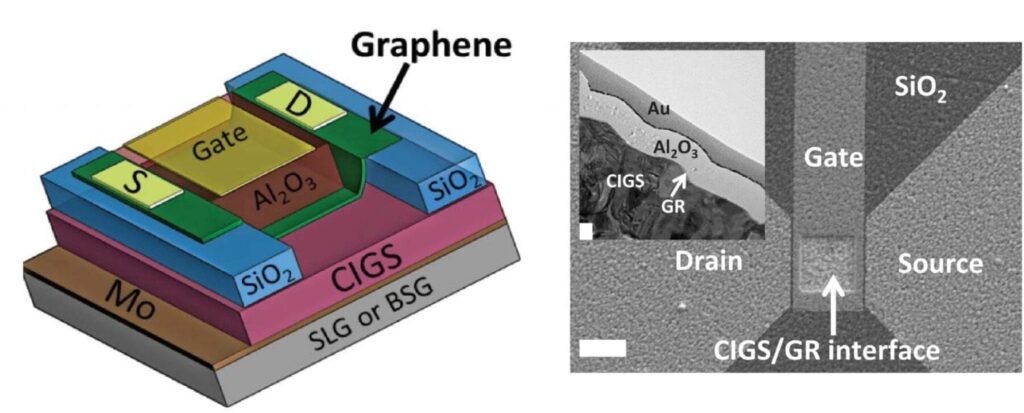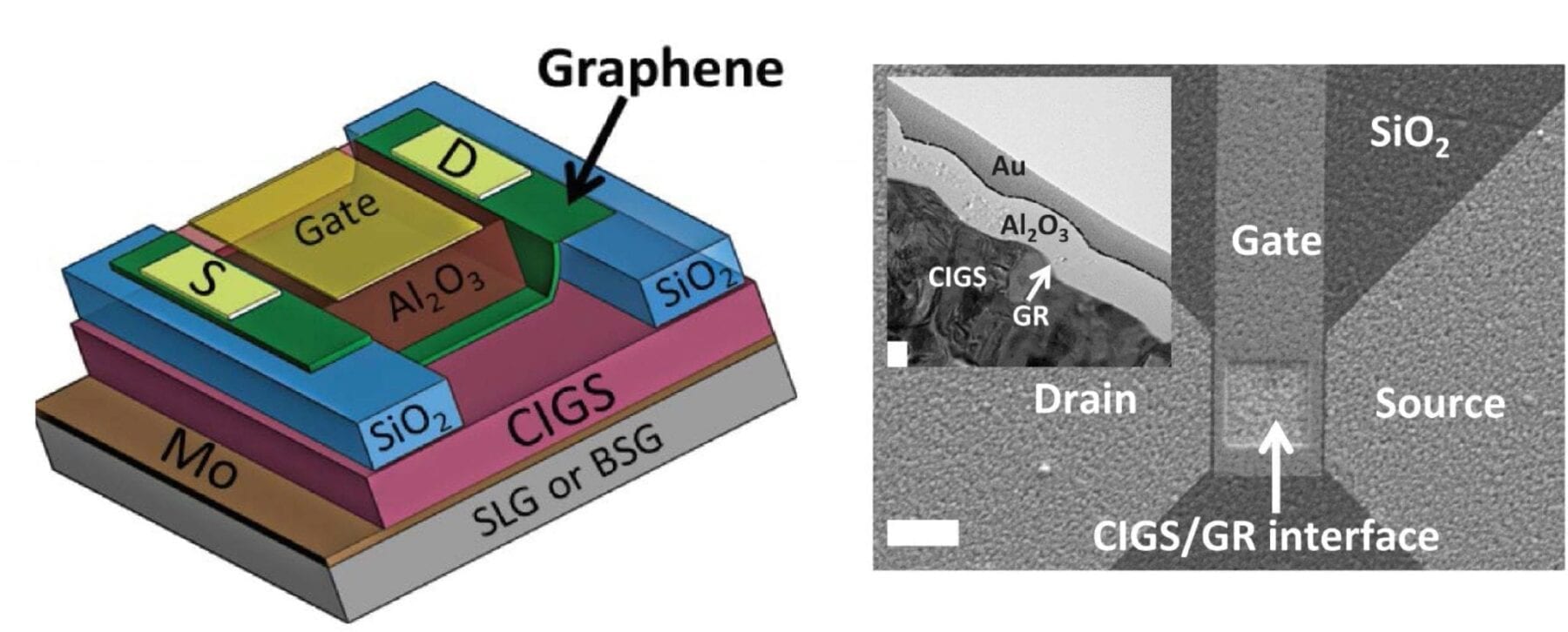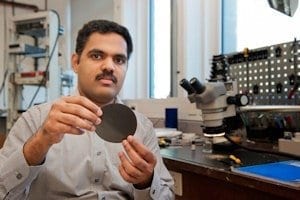
Graphene, the two-dimensional powerhouse, packs extreme durability, electrical conductivity, and transparency into a one-atom-thick sheet of carbon. Despite being heralded as a breakthrough “wonder material,” graphene has been slow to leap into commercial and industrial products and processes.
Now, scientists have developed a simple and powerful method for creating resilient, customized, and high-performing graphene: layering it on top of common glass. This scalable and inexpensive process helps pave the way for a new class of microelectronic and optoelectronic devices—everything from efficient solar cells to touch screens.
“We believe that this work could significantly advance the development of truly scalable graphene technologies.”
— Brookhaven Lab and Stony Brook University physicist Matthew Eisaman
The collaboration—led by scientists at the U.S. Department of Energy’s (DOE) Brookhaven National Laboratory, Stony Brook University (SBU), and the Colleges of Nanoscale Science and Engineering at SUNY Polytechnic Institute—published their results February 12, 2016, in the journal Scientific Reports.
“We believe that this work could significantly advance the development of truly scalable graphene technologies,” said study coauthor Matthew Eisaman, a physicist at Brookhaven Lab and professor at SBU.
The scientists built the proof-of-concept graphene devices on substrates made of soda-lime glass—the most common glass found in windows, bottles, and many other products. In an unexpected twist, the sodium atoms in the glass had a powerful effect on the electronic properties of the graphene.
“The sodium inside the soda-lime glass creates high electron density in the graphene, which is essential to many processes and has been challenging to achieve,” said coauthor Nanditha Dissanayake of Voxtel, Inc., but formerly of Brookhaven Lab. “We actually discovered this efficient and robust solution during the pursuit of something a bit more complex. Such surprises are part of the beauty of science.”
Crucially, the effect remained strong even when the devices were exposed to air for several weeks—a clear improvement over competing techniques.
Learn more: Graphene Leans on Glass to Advance Electronics
The Latest on: Graphene
[google_news title=”” keyword=”graphene” num_posts=”10″ blurb_length=”0″ show_thumb=”left”]
via Google News
The Latest on: Graphene
- Compare with NAGASE & CO., LTD. (NGSCF)on May 1, 2024 at 2:50 pm
Select "Add to Compare" to begin comparing Stocks, ETFs, Mutual Funds and more.
- Scientists developed a sheet of gold that’s just one atom thickon May 1, 2024 at 10:00 am
Ultrathin goldene sheets could reduce the amount of gold needed for electronics and certain chemical reactions.
- People in composites: April 2024on April 30, 2024 at 9:32 am
TFP Hydrogen Products, Airbus SE, TPI Composites, IDI Composites International and Integrated Graphene announce new personnel and retirements.
- Graphene Manufacturing Group Announces Upsize of Offering to $3.024 Millionon April 30, 2024 at 8:42 am
NOT FOR DISTRIBUTION TO UNITED STATES NEWSWIRE SERVICES OR FOR DISSEMINATION IN THE UNITED STATESBase Shelf Prospectus Accessible and Prospectus Supplement to be Accessible on SEDAR+ BRISBANE, ...
- Graphene at 20: why the ‘wonder material’ is finally coming goodon April 30, 2024 at 6:31 am
Strong, light and with amazing electronic properties, graphene has always been touted as the “wonder material”. But two decades after it was first isolated, James McKenzie believes the graphene is ...
- BLACK SWAN GRAPHENE LAUNCHES GRAPHCORE: INNOVATIVE GRAPHENE NANOPOLATELETS PRODUCT FAMILY FOR TURNKEY SOLUTIONSon April 29, 2024 at 9:01 pm
TORONTO, April 30, 2024 /PRNewswire/ - Black Swan Graphene Inc. ("Black Swan") (TSXV: SWAN) (OTCQB: BSWGF) (Frankfurt: R96), proudly announces the commercialization and release of GraphCore™ 01 family ...
- Graphene-infused glass fiber fabric bridges conductivity with electromagnetic transparencyon April 28, 2024 at 5:00 pm
Attempts to combine these disparate properties often fell short. Recent advancements in two-dimensional materials, particularly graphene, have opened new avenues to tackle this challenge. Graphene ...
- Novel graphene oxide spray coating advances antiviral protection of face maskson April 22, 2024 at 9:57 am
In the relentless battle against airborne viruses, researchers have developed a new spray coating to improve the antiviral efficacy of personal protective equipment, notably face masks. The study is ...
- Graphene’s Light-Speed Electrons Promise Revolution in Nanoscale Transistorson April 18, 2024 at 3:24 pm
Researchers have shown that double-layer graphene can function both as a superconductor and an insulator, a property that could revolutionize transistor technology. This dual functionality allows for ...
- Daily briefing: ‘Goldene’ is a gilded cousin of graphene that is one atom thickon April 17, 2024 at 5:00 pm
Single-atom-thick sheet of gold is probably the first 2D metal. Plus, some bumblebees can survive up to a week underwater and what crackdowns on smoking and vaping will do for public health.
via Bing News











